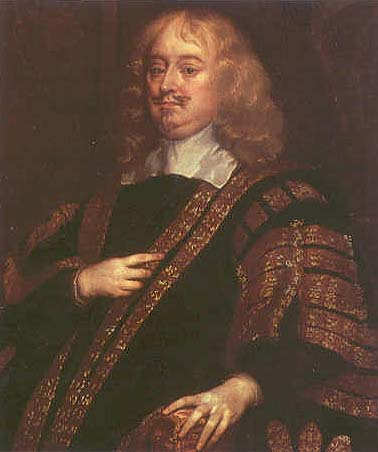Birth of the First Earl of Clarendon
Richard Cavendish remembers the birth of Birth of the First Earl of Clarendon on February 18, 1609.
 The Hydes were well-to-do Wiltshire country gentry. One of the younger sons, Henry Hyde, married Mary Langford, the daughter of a rich merchant. Her father left her a fortune and the pair shared a comfortable house in the village of Dinton, near Salisbury, where Henry spent most of his time quietly among his books. He also served several times as a member of the House of Commons during Queen Elizabeth’s reign, but in 40 years of their married life, Mary never once visited London. Edward Hyde, born at Dinton, was the couple’s third son of four and the only one who survived. He was educated partly by the village schoolmaster and partly by his father, before being sent off to university at Oxford when he was 13. He got into idle and drunken ways and later said it was not a good thing that a boy should be given so much freedom so young. He took a degree and at 16, in 1625, was sent to the Middle Temple in London to be a lawyer. He was not enthusiastic for the law and spent much time in rough company but, as he said in his autobiography years later, he always enjoyed history, especially Roman history.
The Hydes were well-to-do Wiltshire country gentry. One of the younger sons, Henry Hyde, married Mary Langford, the daughter of a rich merchant. Her father left her a fortune and the pair shared a comfortable house in the village of Dinton, near Salisbury, where Henry spent most of his time quietly among his books. He also served several times as a member of the House of Commons during Queen Elizabeth’s reign, but in 40 years of their married life, Mary never once visited London. Edward Hyde, born at Dinton, was the couple’s third son of four and the only one who survived. He was educated partly by the village schoolmaster and partly by his father, before being sent off to university at Oxford when he was 13. He got into idle and drunken ways and later said it was not a good thing that a boy should be given so much freedom so young. He took a degree and at 16, in 1625, was sent to the Middle Temple in London to be a lawyer. He was not enthusiastic for the law and spent much time in rough company but, as he said in his autobiography years later, he always enjoyed history, especially Roman history.
Edward made a promising marriage to Anne Ayliffe, daughter of another Wiltshire landowner, who brought him links with the powerful Villiers family, but she died of a miscarriage after only six months of their marriage. He later wrote of his desperate unhappiness and confusion at her loss, but he persisted with the law in London, while becoming a friend of dramatist Ben Jonson.
In 1634 Edward married Frances Aylesbury, daughter of the Master of the Mint, who would bear him nine children and brought him useful political and social connections.
From these beginnings, Edward went on to be a Member of Parliament from 1640, an adviser to Charles I from 1641 and principal counsellor to the future Charles II from 1644. With the Civil War lost by the royalists, he escaped to Jersey with the prince in 1646 and there began to write his History of the Great Rebellion which, under the pressure of close involvement in royalist politics, he was not able to complete until his last years. If not entirely unbiased, the History is acknowledged as an indispensable contemporary account and Edward’s biographer, R.W. Harris, called him ‘the first of the great English historians’.
After Charles II’s return to the throne, Edward was created Earl of Clarendon, but he soon fell from favour and went into exile in France. His daughter Anne married the future James II and was the mother of Queen Mary II and Queen Anne, but he did not live to see that. He died in France in 1674, at the age of 64.




